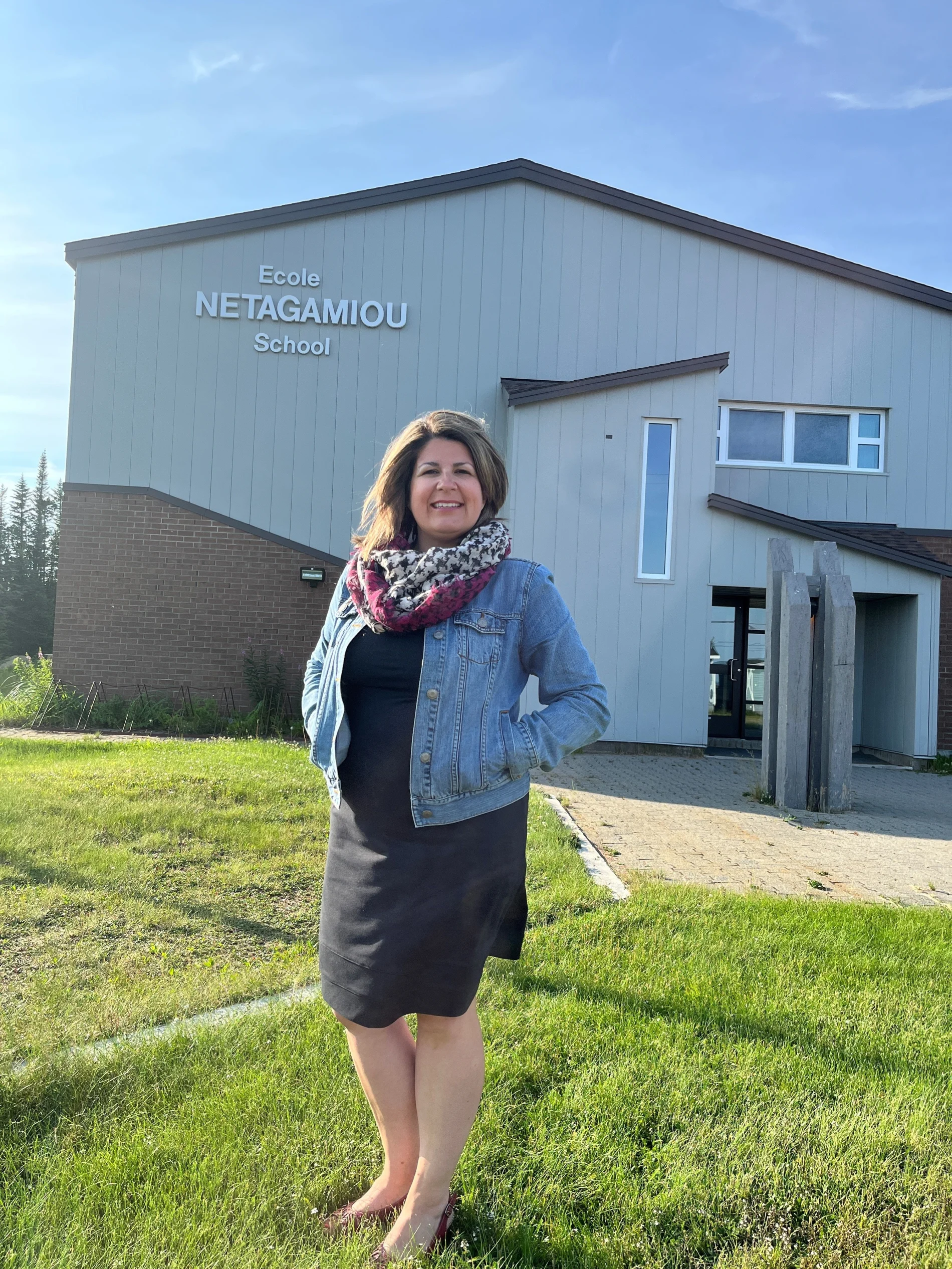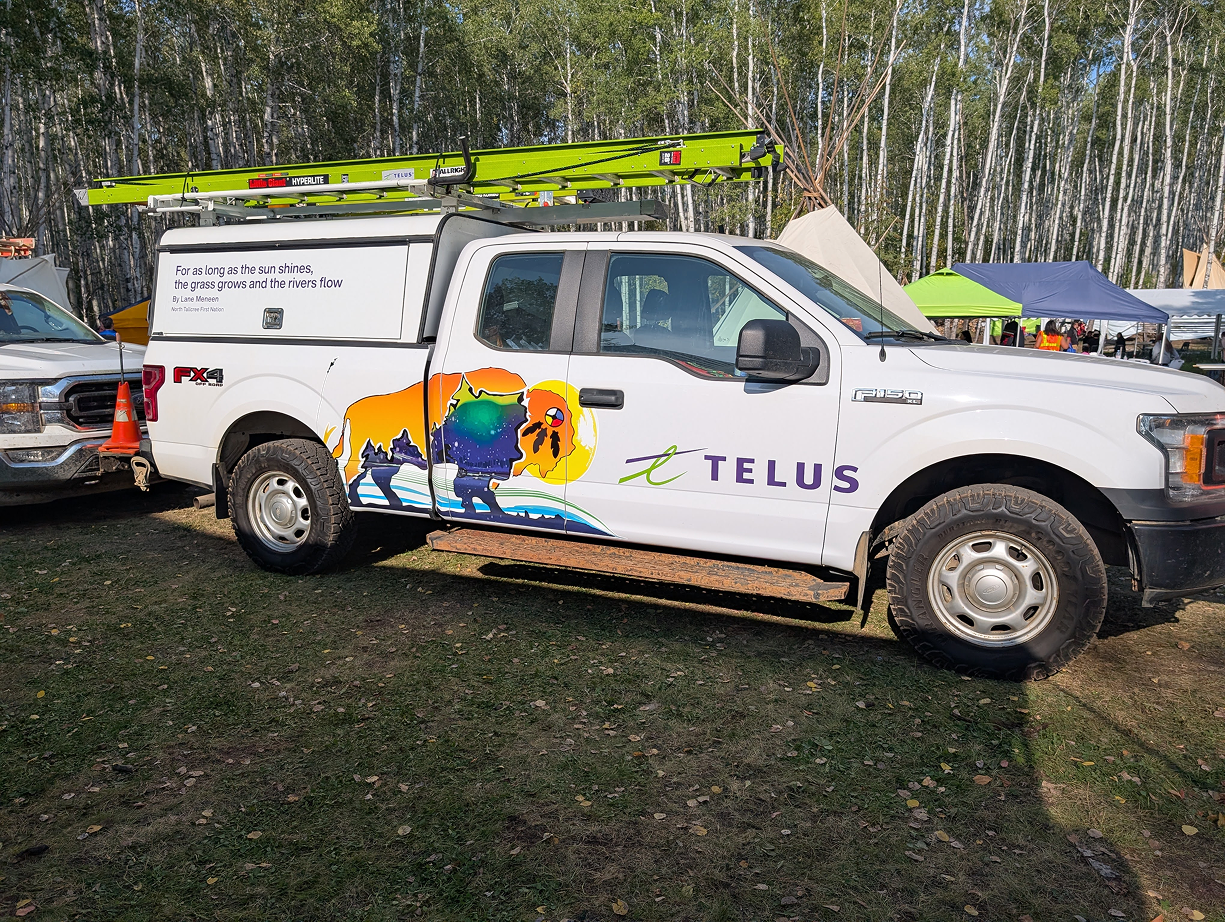
Connecting Canada
New connected era takes limits off learning | TELUS
Aug 29, 2022
(Above) Kids play STÖRIA, via Lü Systems, an interactive application that allows teachers to create timelines to be put back in order through ball throws. It’s one of many new educational opportunities in Quebec’s Lower North Shore following the completion of a $23-million network investment by TELUS.
As science and technology teacher at St. Paul’s, a school in Quebec’s isolated Lower North Shore, Lana Rowsell has spent years working to ensure kids in the region have access to the people, resources and technology they need to attain their hopes and dreams as they move into adulthood.
That passion, shared by educators throughout the region, is a big reason why students here have long excelled at their schooling and graduation rates are consistently high.
But, without high-speed network infrastructure to the area, there was a nagging worry young people were missing out on key opportunities compared to those in larger urban centres.
All Canadians deserve resilient and reliable high-speed internet access to connect them to what matters most.
The Lower North Shore – a collection of a dozen French, English and Innu villages spread out along 375 km of coastline bordering the Gulf of St. Lawrence – is far away from any urban centre, and 1,600 kilometres away from Montreal. As education elsewhere in the country grows increasingly dependent on digital technology, students here made do with textbooks and other analog resources.
“We had dial-up years ago and then evolved to satellite internet, but it was tough – every time the internet went down you had to run around the school to see if someone was on YouTube and taking up bandwidth,” says Rowsell. “It was a real struggle.”
That’s all changed today, however, as the Lower North Shore experiences a new connected era full of hope, revitalization and a world of learning opportunities.
With the completion of an ambitious $23-million network project in 2021, the region’s 2,000 households have access to high-speed internet and mobile phone service through TELUS’ 5G network for the first time ever, and residents can stream, connect and research at similar speeds as those living in urban areas. The new infrastructure also meaningfully enhanced the strength and capacity of an existing high-speed network serving schools in the region.
Critically, young people here now have the same advantages as their peers elsewhere in the country.
“All of these doors have opened for us to teach in a way we want to teach and for students to be able to use so many fantastic tools in a productive way,” says Rowsell.

“I hope my students use their tools to be producers rather than just consumers. I want them to expand their minds and make new things,” says science and technology teacher Lana Rowsell.
Higher graduation rates
Connectivity has long been a challenge for rural communities in Canada and beyond. According to the
CRTC
, 87 per cent of all Canadian households have reliable broadband internet; that number falls to 46 per cent in rural areas.That’s a serious challenge for young Canadians who increasingly need access to the internet to learn. A 2018
study
found that those with high-speed internet connectivity outperform those with lower connectivity by fairly wide margins in both math and language arts. A separate study
found that increased internet access by school districts leads to higher graduation rates and more students completing advanced courses. Economically, a $600,000 increase in annual internet access spending corresponded to a financial gain of about $820,000 to $1.8 million per school district.“Time is demonstrating that internet connectivity is more vital with each passing moment,” says John Buck, president and CEO of the Community Economic Development and Employability Corporation, an organization that helps create jobs, grow businesses and social enterprises, increase trade, and attract investment to communities across Quebec. “The future economy is about connecting and leveraging public, private and civil society knowledge and resources so that communities can participate successfully in local, regional, national and global markets. Today, community success begins with a ‘C’ – and it stands for ‘connected.’”
Fortunately, TELUS is accelerating rural connectivity projects, with 30 new communities slated for network builds or upgrades in 2022.
When TELUS deployed its world-leading network to the Lower North Shore, it did so through a public-private investment with the Canadian and Quebec governments and the Société du Plan Nord. The project is part of TELUS’ longstanding commitment to extend connectivity to remote communities, ensuring that every citizen has access to the technology that yields the opportunity to realize their full potential.
This year, the tech company announced a $11-billion investment in network infrastructure, operations and spectrum across Quebec over the next four years – building off the more-than $31 billion it has already spent over the last two decades connecting hundreds of the province’s communities and businesses through
5G
and TELUS PureFibre
networks. The investments are part of a $70-billion overall investment across Canada between now and 2026.
School director Rebecca Nadeau-Monger says the interactive experiences offered through Lü Systems have positively changed the way young people learn in this isolated region.
NASA on the Lower North Shore
TELUS is also investing in tools that help students learn. In 2021, the company, along with the
TELUS Friendly Future Foundation
and a team of partners, donated $350,000 to buy 10 Lü systems
– an interactive and immersive technology designed to engage kids physically, intellectually and emotionally.For Vincent Routhier, Lü’s CEO, connecting children and youth in rural communities to high-tech systems can be “a life-altering experience.
“The system doesn’t just help students, it also empowers teachers to do their jobs more effectively. It’s giving them access to things they can now dream of and work towards for the future,” he adds.
The systems, which were created by the Quebec City-based company and are now used in schools around the world, were recently installed in Lower North Shore schools and have dramatically changed the way kids are learning, says Rebecca Nadeau-Monger, school director of three smaller schools in the Lower North Shore.
At Nadeau-Monger’s schools, for instance, therapists and speech pathologists regularly meet with students who need additional learning support. During one class, NASA scientists Zoomed in to talk about space, which, of course, blew the kids away.
“That’s not something small and isolated communities get access to very often,” she says.
Additionally, educators are discovering they can provide all kinds of experiences their students have never received before.
At St. Paul’s school, for instance, the combination of the Lü System and increased connectivity through the TELUS network has enabled a host of virtual speakers and online workshops. To the excitement of many, it also allowed kids to watch a movie together on the big screen – a treat for a community with no movie theatre.
“The Lü keeps them so engaged. They’re having a blast with the system. It’s great to hear them laughing and playing,” says Rowsell.
Rowsell’s hope is that her students, and others in the Lower North Shore, will get even more creative with their new tech tools going forward.
“I hope my students use their tools to be producers rather than just consumers,” she says.“ I want them to expand their minds and make new things. We’re going to use our connectivity to create and explore.”
Explore similar articles

You can help connect our communities
Better government policies are needed to ensure better connectivity for all Canadians.
Get informed and take action

